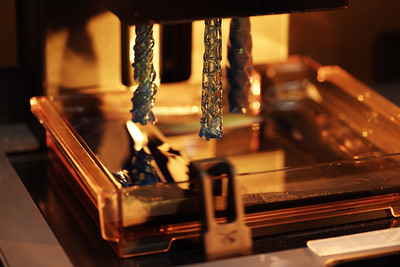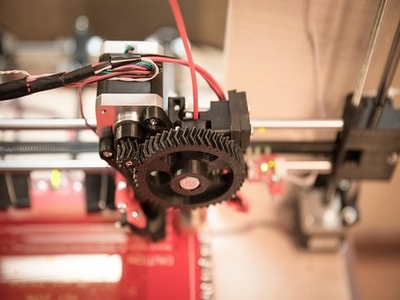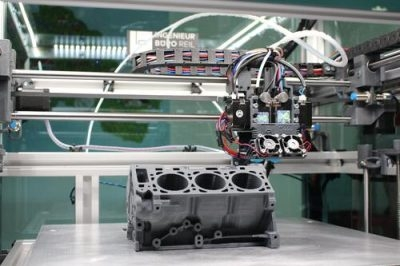The term 3D printing covers a wide range of technologies, including stereolithography (SLA), selective laser sintering (SLS), and fused deposition modeling (FDM).
Resin is one of the most common materials used in 3D printing and has many benefits over other materials.
However, there are some risks associated with using resin that you should be aware of. But how toxic is resin 3D printing?
In this blog post, we’ll specifically be discussing resin 3D printing and how toxic it can be.
What Are the Benefits of Resin Printing?
3D printing technology has come a long way in recent years with a variety of ways to create three-dimensional objects.
Resin printing is one of the most popular methods that offers a number of benefits over other 3D printing technologies.
One of the main advantages of resin printing is that it can create very detailed and accurate prints.
This is due to the fact that the print head can move in very small increments, allowing for a high level of precision.
Additionally, resin prints tend to be very strong and durable, making them ideal for applications where strength is important.
Finally, resin prints can be made in a wide range of colors and finishes, giving you plenty of options when it comes to creating your perfect print.
How Toxic is Resin 3D Printing?

It Can Be Really Toxic
Resin can be very toxic if you are not careful.
The fumes from the printing process can be harmful if inhaled, and the chemicals in the resin can cause skin irritation.
In addition, if the resin is spilled on clothing or other surfaces, it can be difficult to clean up.
For these reasons, it’s important to take precautions when using resin 3D printers.
- Make sure to work in a well-ventilated area, wear gloves, and a mask to protect yourself from the fumes.
- In addition, be sure to clean up any spills immediately, and wash any clothing that comes into contact with the resin.
By taking these simple steps, you can help keep yourself safe while enjoying the benefits of 3D printing.
It Can Be Flammable
Resin 3D printing can be flammable.
The process of 3D printing with resin involves the use of a laser to cure layers of liquid resin into solid objects.
Unfortunately, the high temperatures generated by the laser can cause the surrounding resin to catch fire.
In addition, the fumes produced by the burning resin can be extremely dangerous.
To minimize the risk of fire, it is important to keep the area well ventilated and to use a fire-resistant build plate.
It is also advisable to wear protective clothing, including gloves and a mask when working with resin.
If a fire does occur, it is important to have a fire extinguisher on hand to extinguish the flames.
Taking these precautions will help to ensure that your 3D printing experience is safe and successful.
It Can Release Harmful Chemicals
3D printing is an additive manufacturing process that creates a three-dimensional object from a digital file, building up layers of material to create the final product.
Resin 3D printing is a type of 3D printing that uses a liquid resin that has been heated up as the print material.
The printer heats the resin until it turns into a liquid, and then it is deposited onto the build platform layer by layer to create the object.
The most common type of resin used in 3D printing, ABS 3d printer (acrylonitrile butadiene styrene), emits styrene when heated.
If your space is not properly ventilated, Resin 3D printing can release harmful chemicals into the air.
Styrene is classified as a possible human carcinogen by the International Agency for Research on Cancer (IARC).
Inhaling styrene can cause headaches, drowsiness, confusion, and dizziness. It can also irritate the eyes, nose, and throat.
Prolonged exposure to high concentrations of styrene may cause more serious health effects, such as liver damage and cancer.
Read More: Difference Between SLA and SLS 3D Printing. Here’s all you need to know!
How Can You Minimize the Risks of Using Resin?

To minimize the risks involved with using this material:
- It is crucial to wear appropriate safety gear, such as gloves and goggles.
- Additionally, proper ventilation will help to prevent any harmful fumes or particles from accumulating in your workspace.
- Consider the curing process itself. Over-exposure to UV light can cause cracking in prints, so it is essential to follow recommended curing times to avoid over curing resin.
With proper attention to health and safety concerns, polymer resin can be a valuable tool for anyone looking to create detailed 3D prints.
Read our related article on How to Properly Dispose of 3D Printer Resin. Improperly disposing of resin can be dangerous. Here’s what to know to do it right!
Should You Be Worried About Toxicity When Using a Resin Printer?
When it comes to 3D printing, there are a few different types of printers that you can choose from.
One type of printer that has become increasingly popular in recent years, is the resin printer.
Resin printers work by projecting a pattern of ultraviolet (UV) light onto a build platform, curing the resin and allowing it to harden into the desired shape.
However, some people have raised concerns about the safety of using these printers, as the UV light can cause certain chemicals in the resin to become toxic.
So, should you be worried about toxicity when using a resin printer? The short answer is that it depends.
Some resins do contain harmful chemicals, but there are also many safe and non-toxic resins available on the market.
If you’re concerned about toxicity, it’s important to do your research and only buy resins from reputable manufacturers.
In most cases, it is also a good idea to ventilate the room where you are using the printer, as this will help to reduce your exposure to any harmful fumes.
Ultimately, as long as you take proper precautions, there is no need to worry about toxicity when using a resin printer.
What Precautions Can You Take When Working With Resins?

When working with resin printers, there are a few precautions you can take to ensure a successful print.
- First, make sure the build platform and bottom of the vat are clean and free of dust or debris to ensure the paint adheres properly and does not get stuck to the bottom of the vat.
- Second, use gloves when handling resin. Resin can be irritating to the skin, so it is important to protect your hands.
- Finally, work in a well-ventilated area. Resin printers emit fumes that can be harmful if inhaled.
The Crux of the Matter
In short, while there are some risks associated with using resin printers, these risks can be minimized by taking proper precautions.
It is important to only buy resins from reputable manufacturers and to ventilate the room where you are printing.
Additionally, it is a good idea to use gloves when handling resin and to make sure that the build platform and bottom of the vat are clean.
By taking these precautions, you can ensure a successful print and a safe work environment.
So there you have it! A brief overview of the risks associated with using resin printers and how to minimize those risks.
Read More